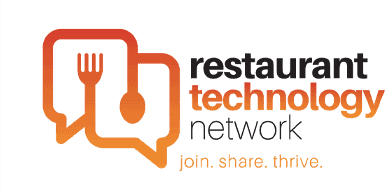Even in turbulent circumstances, we can always count on the world to change. And when it comes to changing with the times, the restaurant industry would seem to be no exception to the rule.
Even before the tectonic adjustments at the beginning of 2020, the restaurant industry was moving inexorably toward the future in a variety of ways. Thanks to the arrival of COVID-19 many of those emerging trends were accelerated, while some others seem to have fallen by the wayside.
So, taking all of this into account, just what does the future hold for the restaurant industry?
Here are three trends that we think are going to influence the industry in the future.
Convenience
Convenience has always been a major consideration for many of us when deciding on a place to eat. Now, more than ever, we don’t want to linger in a situation that could increase our likelihood of exposure to the virus.
During COVID-19, takeout and delivery have exploded as the method of choice for obtaining our favorite restaurant fare, with 46 percent of respondents in a survey by Deloitte confirming that their habits won’t be going back to pre-COVID-19 levels anytime soon.
The simple truth is that, once consumers have gotten a taste of such increases in dining convenience, the popularity of takeout, delivery, and drive-through is likely to continue to grow over time. It’s no wonder restaurants are making changes to reflect that trend. The footprints of quick-service restaurant (QSR) service models are shrinking to make way for a greater share of available space for digital and off-premise orders.
No touch, no contact
Much like delivery and takeout, the concept of touchless payment has also exploded as a result of COVID-19. But not only have guests come to prefer these payment methods due to their inherent safety, but the data also proves that in many cases, but guests are also actually spending more when contactless payment options are available than they do when they have to hand over cash or a physical card.
According to data from the 2020 Annual U.S. Debit Card Market Data Review,
- 51% of consumers are using Mastercard contactless (credit, debit, wallet)
- 33% of US consumers have switched their top-of-wallet card to contactless
- 45% of US consumers prefer to shop at stores that have contactless POS
- 56% of US consumers will continue using contactless post-Covid
- According to Visa, 31 million Americans tapped a Visa contactless card in March, up from 25 million in November
- Visa contactless usage has grown 150% since March 2019
What does all this mean? Contactless payment is becoming and will continue to become the norm. With just the wave of a card or a hover of a phone, guests can pay for their food and be on their way quickly and safely. And COVID-19 has brought on additional payment methods that require even less contact. A text, a tap on your phone screen, or an online payment is now all it takes to settle your check. You don’t even have to be in the same building.
Increased safety
Thanks to COVID-19, consumers are more aware of sanitary procedures now than they’ve ever been, and their expectations of due diligence are not likely to go away any time soon.
Whether it be improved air filtration, the latest hand scanning technology that can identify viruses and bacteria on associates’ hands, or simply the continuation of contactless service models like those mentioned above, customers will expect safe conditions, and you’ll want to keep them informed of how you’re keeping them safe.
Contactless solutions like those from OneDine can help meet these new expectations and streamline your dining and food-service capabilities to efficiently and quickly serve customers with a leaner workforce and in a way that keeps everyone safer.
Patrons can order via their mobile device, without waiting for wait staff to get to them. They can easily pay, split the check, or pay per item. They can do all this on their schedule and right from the convenience of their table.
The OneDine platform can even use customer-centered profiles and purchasing histories to offer personalized offerings and menu suggestions tailored to each individual patron.
All these solutions can not only keep you and your guests safer, they can also keep customers coming back by showing them that you’ve got their best interests and safety in mind.
The future is now. Make sure you’re ready for it.





